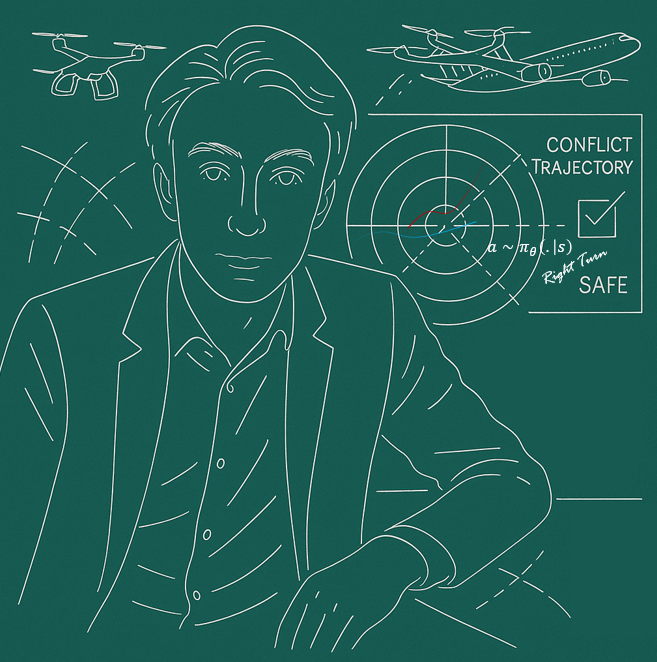I would contribute to the development of future ground-based UTM systems, with a particular focus on centralized tactical conflict resolution to prevent mid-air collisions.
Artificial intelligence plays a central role in my vision...
It sparks both excitement and fear: some believe AI will eventually be capable of everything, while others worry about being replaced or losing their expertise, which is understandable... While others fear uncontrolled progress that could even threaten humanity. Too often, the debate is reduced to black and white, whereas the reality lies in the nuances.
Aviation will require clear regulations to ensure the safe integration of AI across three fundamental aspects: autonomy, performance, and responsibility.
My vision is not to replace air traffic controllers or future UTM service providers, but to support them.
By adopting a human-on-the-loop approach, we preserve their expertise while reducing workload. AI becomes a trusted partner, handling most situations with high efficiency while keeping humans in a supervisory role with ultimate authority. In practice, this means lighter workloads, better stress management, and safer decision-making in an increasingly complex airspace ecosystem.
These future systems will also create new roles in training, supervision, and maintenance, ensuring that human expertise remains central to the future of air traffic management and preserving aviation’s status as the safest mode of transportation.
